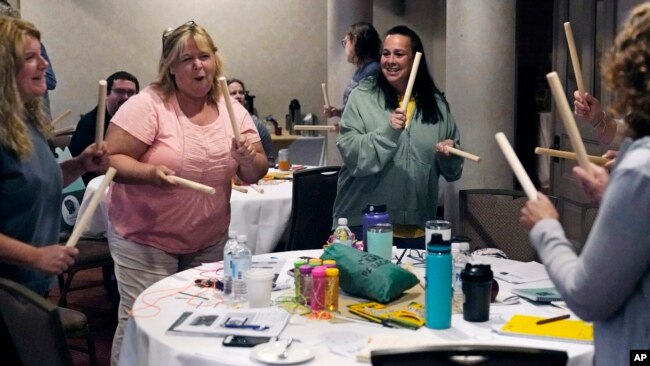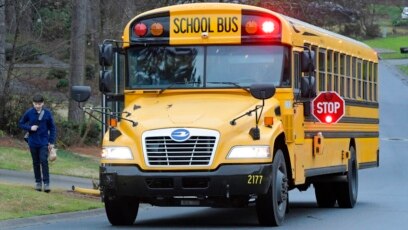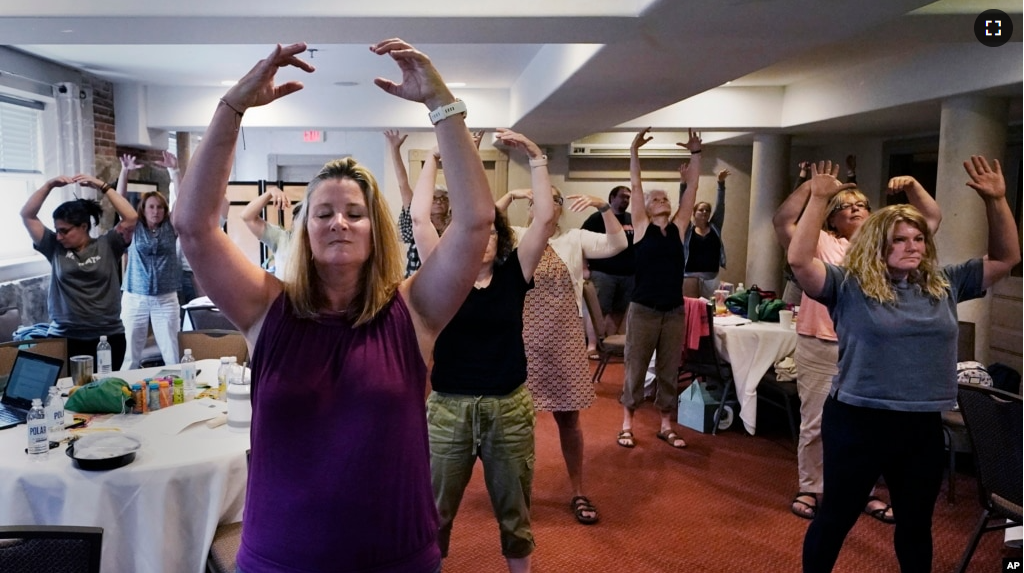More school systems are making an effort to deal with some of the problems teachers face, including taking care of their mental health.
Many schools do not have enough teachers. Current problems facing teachers include behavioral problems and fears of shootings.
Some school districts have provided increased mental health training for workers and support in the classroom. They have also provided resources aimed at identifying burned out teachers and getting them connected to help.
Being burned out means a person has become very physically and emotionally tired after doing a difficult job for a long time.
A recent opinion study by the Rand Corporation found that twice as many principals and teachers reported frequent job-related stress as other working adults.
The Centers for Disease Control and Prevention (CDC) noted a similar study that came from a coalition of mental health organizations in New Orleans. It found educators working during the COVID-19 pandemic reported rates of emotional difficulties similar to those of health care workers. It found 36 percent showed signs of anxiety, 35 percent had depression, and 19 percent showed signs of post-traumatic stress disorder.

Leigh Mclean is the main investigator at the Teacher Emotions, Characteristics, and Health Lab at the University of Delaware School of Education. She said, “It’s all pretty bad.”
She found levels of depression, anxiety, and emotional tiredness among elementary school teachers that are 100 to 400 percent higher than before the pandemic.
She said those problems are increasing the most among less experienced teachers. She said she recognized similarities between teachers and the general population “with underrepresented groups being hit the hardest…”
Some districts have or are planning to spend federal COVID-19 aid money on teacher mental health. They hope it might improve the classroom environment, keep teachers on the job and help students. Nebraska and Pennsylvania are among the states choosing teacher mental health as a top goal.
A Delaware school district hired two social and emotional learning experts who deal with problems teachers are having in the classroom.
And an elementary school in Indiana starts the week with Mindful Mondays, where teachers guide their classes in deep breathing. There are also Thoughtful Thursdays, where a student is called on to write a letter to someone working at the school to show that they are thankful. And on Friday Focus students and teachers talk about self-care.
A growing number of groups offer training to improve mental health. Methods include breathing exercises, yoga, gentle movements and meditation.
One program aimed at improving mental health is Cultivating Awareness and Resilience in Education, or CARE. Researchers found improvements, including reductions in mental health problems, in studies of its use among 224 New York City teachers. The studies also found reductions in stress and improvements in quality classroom interactions. Researchers found it helped students show increased engagement.
I’m Gregory Stachel.
Michael Casey reported this story for The Associated Press. Gregory Stachel adapted it for VOA Learning English.
Quiz – Schools Aim to Ease Teachers’ Tension, Burnout

Start the Quiz to find out
___________________________________________________________________________
Words in This Story
district –n. an area set up by a government for a specific purpose
principal – n. the person in charge of a public school
frequent – adj. happening often
anxiety –n. fear and nervousness about what might happen
post-traumatic stress syndrome (PTSD) –n. a condition of extreme stress caused by a shocking or severe event in the past
pretty – adv. to a great degree or extent
meditation –n. the process of spending time in quiet thought
stress – n. a state of mental tension and worry caused by problems in your life or work
interact – v. to talk or do things with other people
engage – v. to become involved with (someone or something) or to show interest in something
